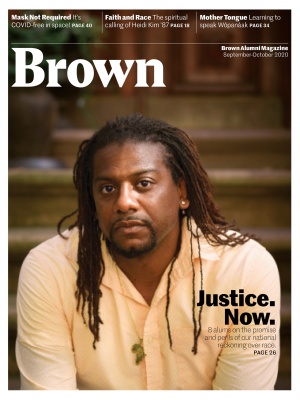A Language, Liberated
White settlers silenced the Wôpanâak language for generations. Nitana Hicks Greendeer ’03 is a leader in the effort to bring it back.
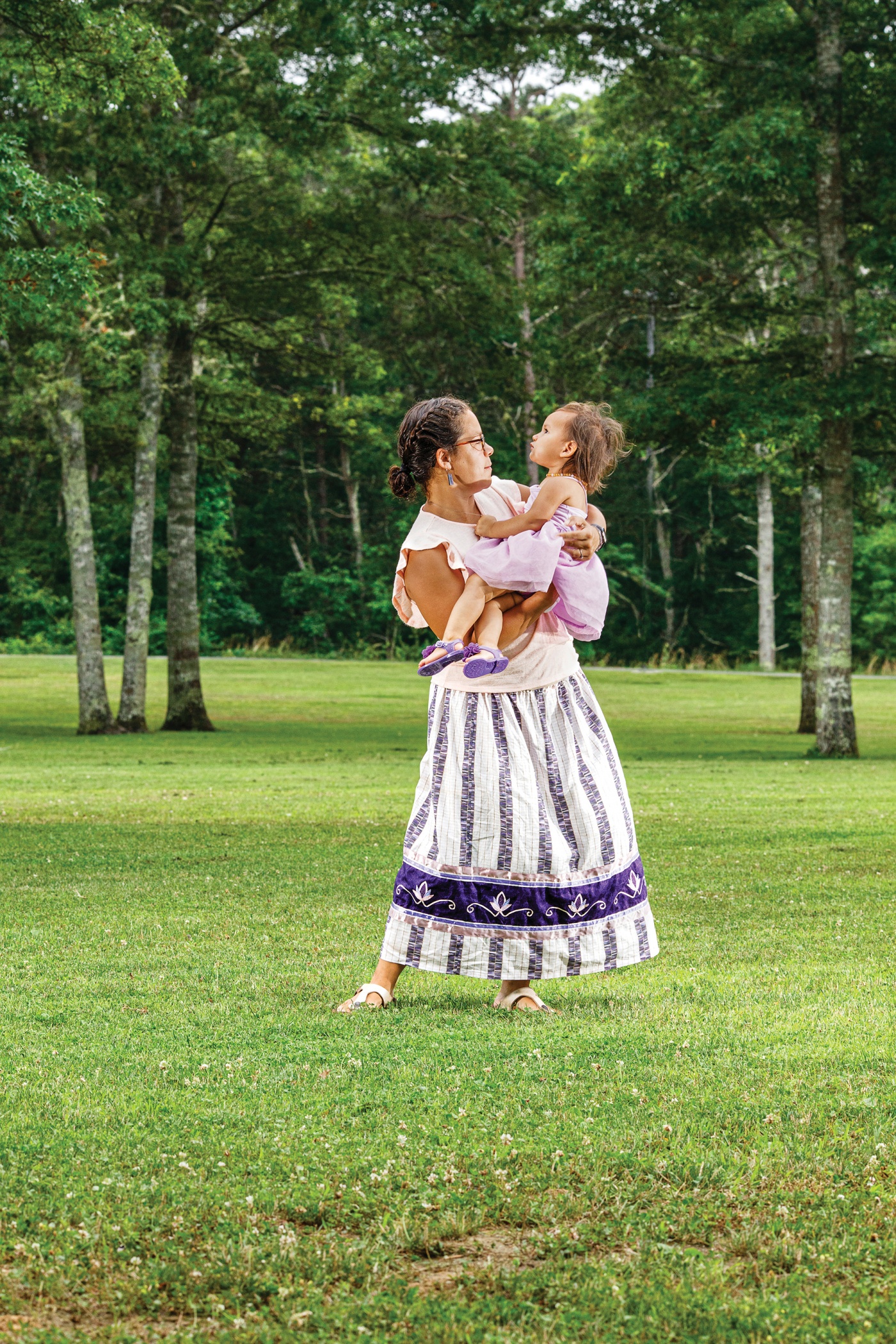
The words were always there—they never went away. Some stood on New England street signs, others lingered in the pages of a Bible or remained as-yet-indecipherable in scribbles on parchment in archives, waiting to be heard.
Most of all, the words of the Wôpanâak language lived in the landscape itself.
As with Woonasquatucket, the name of the river at the foot of Brown’s campus, hemmed by the once-Christian city built rudely atop it. Or Seekonk, Pawtuxet, Moshassuck. Like the bodies of water they described, these words, and the people who authored them before their English appropriation, have existed in this place far longer than any colonial town.
Yet for at least six generations, more than a century, the Wampanoag had lost their language—the violence of settler colonialism and the forced-assimilation practices of Christianization saw to that.
Nitana Hicks Greendeer ’03 grew up on the tribal lands of the Mashpee Wampanoag, on Cape Cod in Massachusetts; she never had the opportunity to learn the language as a child.
“There’s so much culture that’s tied to the language, so much world-view that I didn’t even know I was missing but is intrinsically enmeshed in language,” says Hicks Greendeer, currently a Brown postdoctoral fellow in American, Native American, and Indigenous Studies.
But today, a new generation of Wampanoag youth will grow up as fluent speakers of their ancestral language, thanks to a decades-long language revitalization project from within the tribe driven by linguistic scholars and educators such as Hicks Greendeer.
Preservation and extinction
The Wampanoag were among the first Indigenous peoples to encounter the Puritan settlers who arrived in New England to colonize their land. One of these settlers, an ambitious missionary named John Eliot, decided he would preach in the native language of the people he hoped to proselytize. Aided by the military powers of colonial authorities, Eliot corralled many Wampanoag people into “praying towns,” settlements intended to contain and Christianize them. To further his missionary work, Eliot commissioned a Bible in Wôpanâak, converting an oral language into a written alphabet. In 1663, it became the first Bible printed in America.
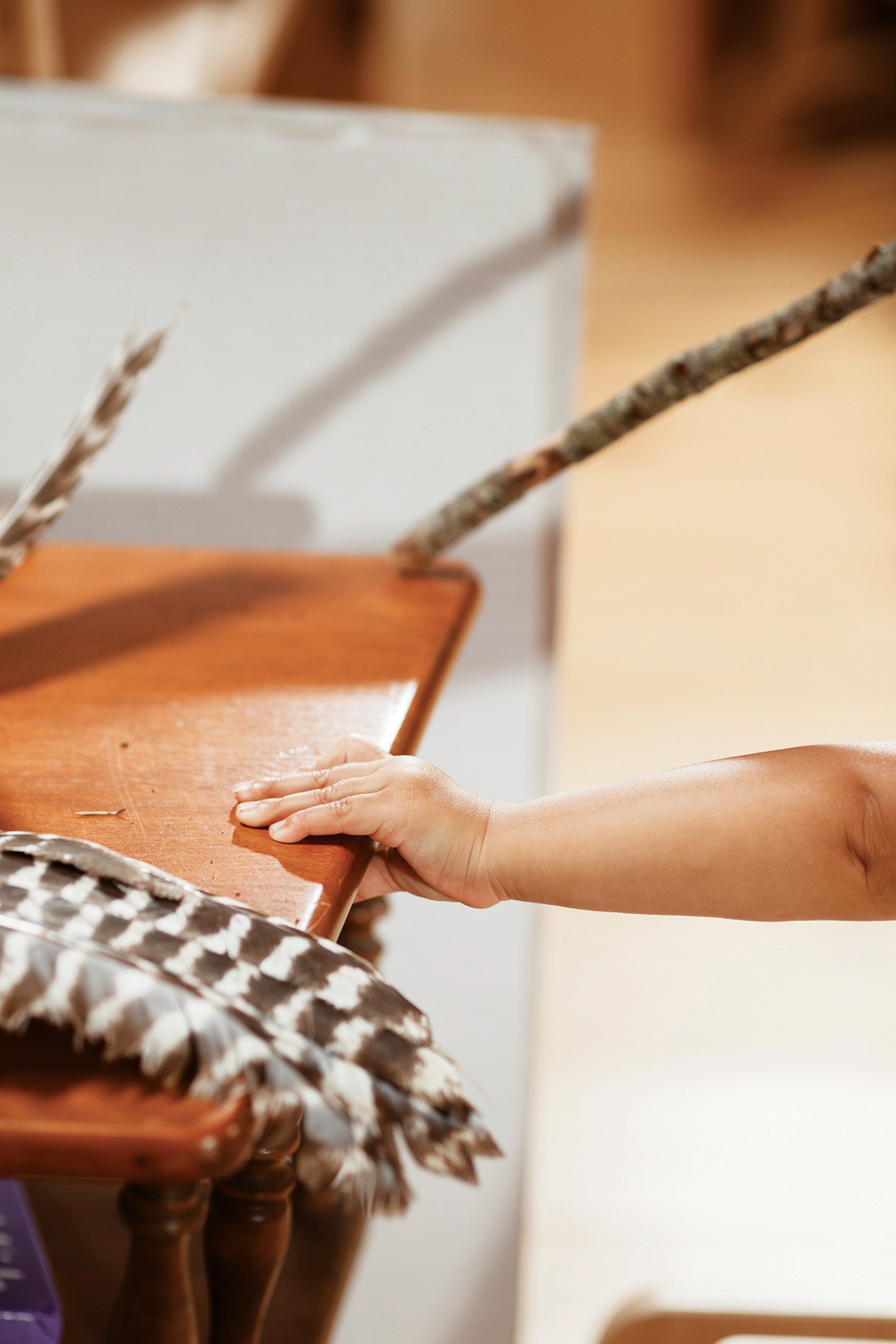
Though Eliot received the credit, the translation work was in fact done by Wampanoag interpreters, including a man named John Sassamon who would go on to take classes at Harvard. Sassamon’s mysterious death in 1675, blamed by colonists on the Wampanoag, helped trigger King Philip’s War, leading to the defeat and massacre of the Wampanoag and other New England Native peoples. With the armed resistance broken, the policies and practices of colonization suffocated the Wôpanâak language, violently forcing it from the Wampanoag community.
A dream realized
In the early ’90s, jessie little doe baird, a Wampanoag woman, had a dream. She heard words she could not understand, Wôpanâak words, and the people who spoke them directed baird to ask the community if they wanted the language to return home. After everyone she asked urged her on, baird began the arduous process of recovering the language by translating colonial-era Wôpanâak documents. She relied on hundreds of Wôpanâak sources—among them deeds, letters of petition, and the Bible commissioned by John Eliot.
Following her graduation, Hicks Greendeer started taking language classes offered by baird through her Wôpanâak Language Reclamation Project. Hicks Greendeer progressed quickly with the language and, pushed by baird, she pursued a master’s in linguistics at MIT to further her understanding. Several years later, working at a Native community center in Oakland, she decided she wanted to return home and create positive educational experiences for Wampanoag youth.
“I realized how lucky I am to come from my tribe’s land and know quite a bit about it,” Hicks Greendeer says. “I felt like I needed to be at home; my future kids, they needed to be raised where my tribe was and have that experience.”
Throwing herself into a doctorate program in education at Boston College, Hicks Greendeer envisioned one day building a school for her tribe. Her doctoral research focused on refining baird’s Wôpanâak dictionary.
“I remember thinking: this is just a language that we speak now. It’s happening, there are actually speakers of this language now.”
In part, baird had unshackled Wôpanâak from its colonial entrapment in the Bible, coaxed words out of the very tool that had been designed to destroy the Wampanoag heritage, and gifted them back to the Wampanoag people. Hicks Greendeer took those thousands of finite words salvaged by baird and opened them up, searching for morphemes, the smallest units of meaning in language. By identifying morphemes and compiling them, Hicks Green-deer wanted to give Wôpanâak speakers the capacity to create new words that remained rooted in the meanings of the original language.
“It was almost like an alphabet with meaning as opposed to sound,” she says, of the list of morphemes that became her doctoral thesis. For example, the “tuck” in Woonasquatucket signifies “river.”
At around this point, at baird’s request, Hicks Greendeer pledged to a master-apprentice language program: learning Wôpanâak became a full-time job.
Along with several other apprentices, Hicks Greendeer met baird each week to spend hours talking, playing card games like Uno and Go Fish, and reading horoscopes aloud to each other, translating the predictions on the spot. They immersed themselves in a world they were reconstructing with each acquired noun and verb, and the language emerged from their mouths first as memorized utterances, then as something more fluid, more alive and graceful, as the words became their own.
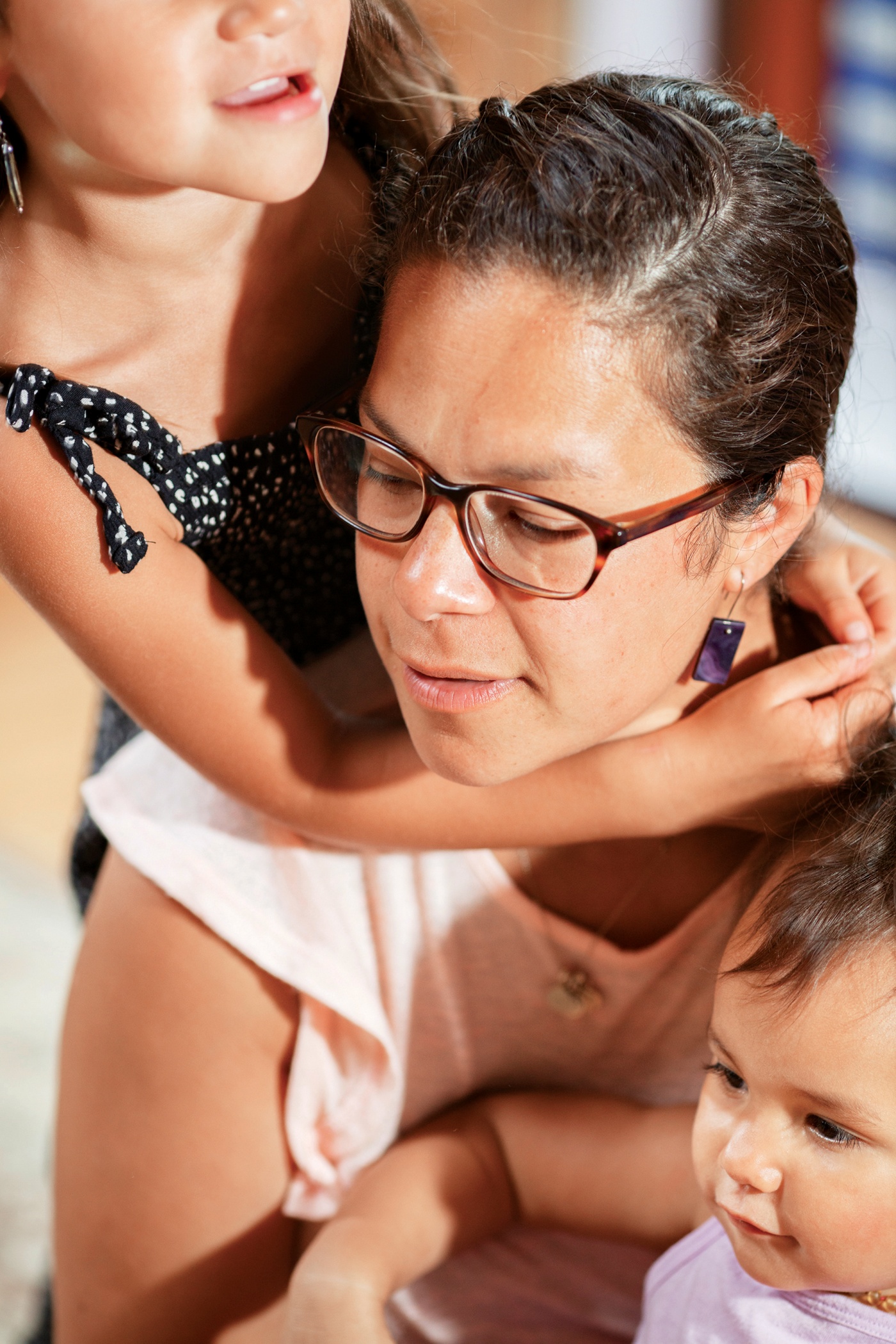
At some point in this process, after a long day of practice, Hicks Greendeer and her fellow apprentices went to a bar. Over drinks, they kept chatting in Wôpanâak.
“I remember thinking: this is just a language that we speak now,” Hicks Greendeer says. “It’s happening, there are actually speakers of this language now.”
Verbal cues
Wôpanâak is a part of the Algonquian language family, which includes more than three dozen languages, with considerable overlap between them. For instance, certain Wôpanâak words will include an “N” where other Algonquian languages will consistently substitute an R, L, or Y.
Many Algonquian languages remain spoken, a critical factor in the recovery of the verbal aspects of Wôpanâak, as linguists could look to other tribes for guidance on pronunciation.
And the words themselves, their construction and meaning, reveal much about the culture and cosmology of her Wampanoag ancestors, Hicks Greendeer says.
“They illustrate how ways of being, living, interacting with the world, are explicit in the language,” she explains.
Both the word for star (anaquhs) and moon (nâhneepâmuhshât) are animate, offering insight into the cosmic awareness of the tribe.
Likewise, Wampanoag values can be inferred from how abstract Christian concepts were translated and integrated into their own belief system. Hell is described as a place of empty heads—revealing how Wampanoag society appreciates independent thought and debate. While English traditionally ties feeling to the heart, Wôpanâak links feelings to the mind, which the analytic Hicks Greendeer appreciated.
As the Wampanoag learn more about their old language, they gain clues as to the nature of the land around them and how their ancestors lived.
“Place names are reflections of what happened there,” Hicks Greendeer says, “of how people related and interacted with those spaces.”
Then, there is the difficulty of actually generating new words for things in the modern world such as cars, bikes, and motorcycles.
“What we typically do when we discover that we need a word, we start by thinking about what it is and what it does,” Hicks Greendeer explains. “We had a discussion between us: what does a car do, what is its function?”
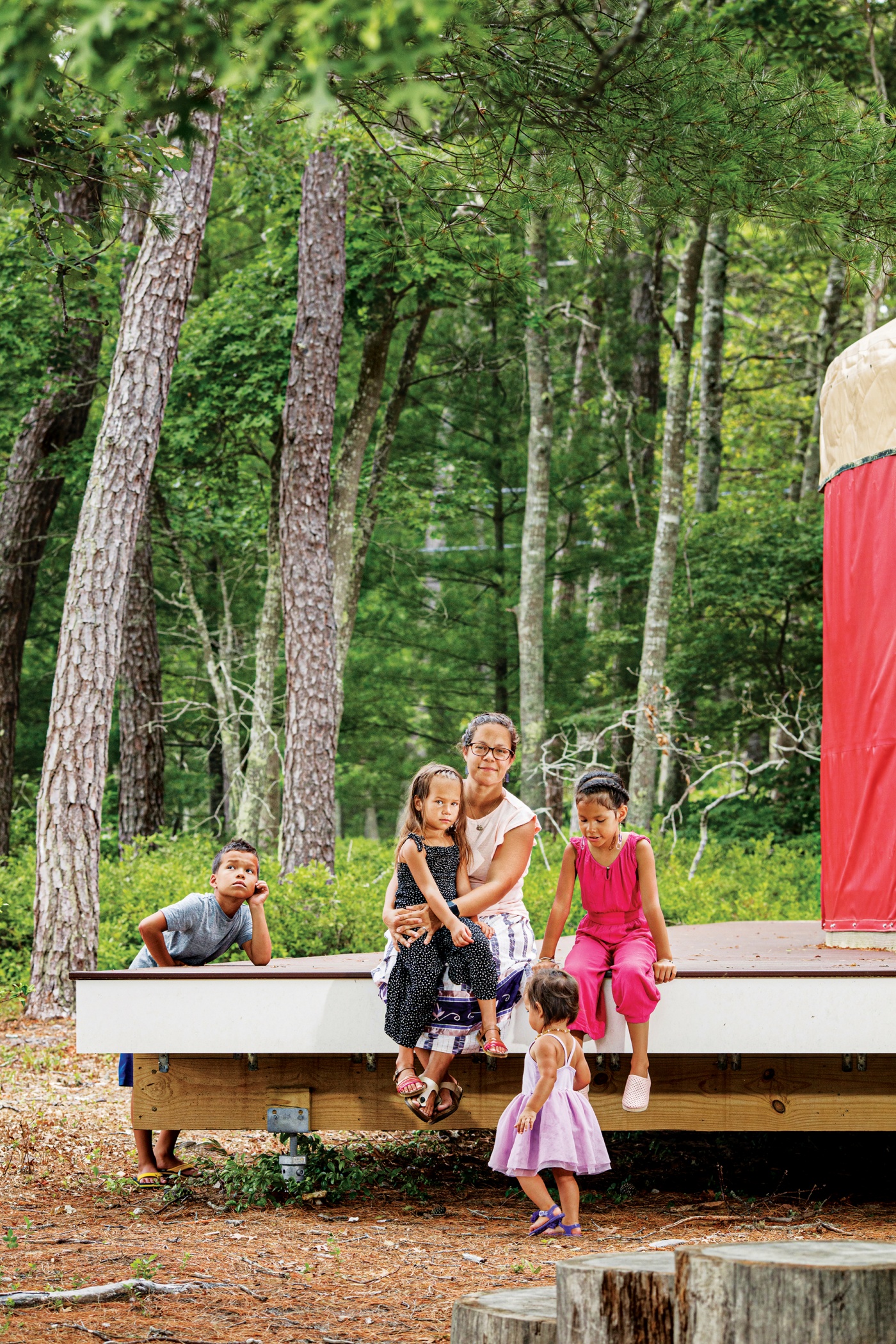
Wampanoag linguists decided that a car’s primary function is rolling, and its most distinguishing feature is its four wheels. So they called it yâweeqât or “rolls by four.” In turn, a bike became neesweeqât or “rolls by two” and a motorcycle became “the really prominent one that rolls by two” (kuhteesweeqât).
Spreading the word
The Wôpanâak Language Reclamation Project has channeled its efforts into an immersion school, started in 2016 and now run by Hicks Greendeer. The school, Weetumuw Katnuhtôhtakamuq, applies a Montessori platform and almost all of the teaching is in Wôpanâak. It follows a tried-and-true model for language restoration; the Mohawk, in upstate New York, have run their own immersion programs for kids since the late ’80s.
Every day, Hicks Greendeer watches her three oldest children, ages seven, five, and three—the younger two are not yet in school—speak the language she helped bring back to life.
“My daughter will tell me: ‘Why are you using English? Use Wôpanâak,’” Hicks Greendeer says.
Located on tribal lands in Mashpee, Massachusetts, the tuition-free school currently has more than two dozen students, from preschool to second grade, with hopes to add a new grade each year. Grants keep the doors open, says Jennifer Edwards Weston ’97, a Lakota woman who serves as the project’s director. While the school had to shift online in mid-March following the arrival of COVID-19, the school will likely remain open with at least a limited schedule in the fall.
In a community that has good reason to be wary of education systems—the government spent decades forcibly detaining Native students in often abusive residential schools—the Weetumuw School, run and taught by community members whom parents know and trust, helps to repair the historical trauma, Hicks Greendeer says.
But even today, the federal government continues to assault Wampanoag lands. In March, the Department of the Interior attempted to revoke the land trust for the Mashpee Wampanoag Tribe on a legal technicality (that the tribe had not been formally under federal jurisdiction in 1934, when the Indian Reorganization Act gave federally recognized tribes enhanced self-governance of their lands). While in June a federal judge ruled in favor of the Wampanoag, allowing them to keep control over their 321 acres of land for the moment, the issue remains an existential threat to the school, Hicks Greendeer says.
The school focuses on teaching students the values of their community as much as the language itself. A yurt used as a classroom is heated with a pellet stove to eschew fossil fuels, and lesson plans embrace traditional ecological knowledge—raising garden beds in the spring, learning where primary food sources come from, and practicing how to butcher and tan a deer and give thanks for its sacrifice.
“A lot of what we try and teach the kids comes from the community itself,” Weston says.
Each day begins with a prayer called “Our Affirmations,” made by the teachers. Students greet each other in Wôpanâak, saying kuweehqahsun or “you are in the light,” acknowledging a new day together. They give thanks to their ancestors, their traditions, and recite their values: compassion, respect, humility, honesty, bravery, and gratitude.
While the teachers spent years preparing and translating hundreds of lesson plans, the school remains flexible when opportunities for learning arise. One day, a parent called up Hicks Greendeer and told her he had hunted three ducks that afternoon and wanted to teach the kids to pluck. The planned lesson got postponed, and the kids instead learned to pull feathers and prepare the birds for eating.
“It’s not a textbook science lesson, but it’s totally a science lesson,” Hicks Greendeer says.
And, she adds, it’s the kind of teaching element that mainstream schools can’t offer: a last-minute pivot that allowed students to see a parent, working to provide for his family, take time out of his day to teach something important. At the core of the school’s mission are moments like these, teaching kids what it means to participate in a community and uphold its traditions—not just any community, but the community that’s the birthright of the next generation of Mashpee Wampanoags.
Jack Brook ’19 is a 2020-2021 Luce Scholar and received the 2019 Betsy Amanda Lehman ’77 Award for Excellence in Journalism.

